Highlights of Singapore
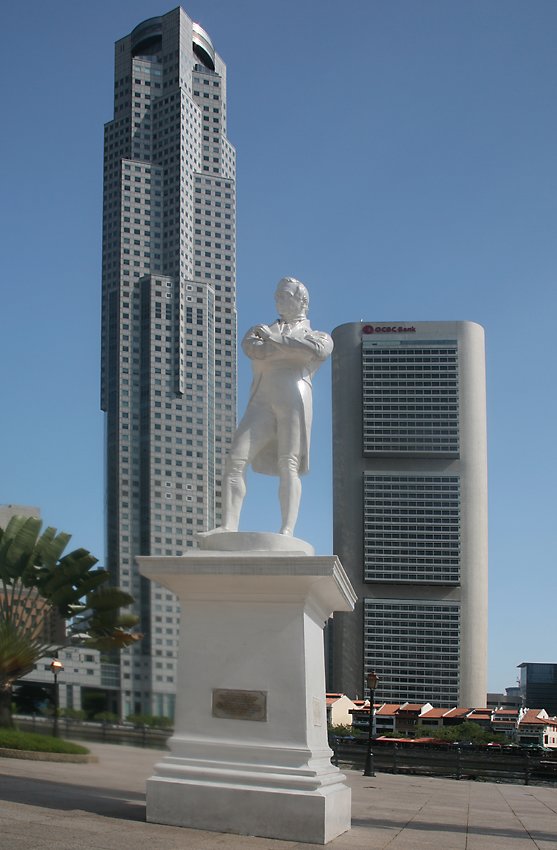
The name Singapore means "lion city", although lions have never lived here. Tigers did once inhabit this area, which was a quiet backwater from the early 1600s to the early 1800s. Singapore's location at the very southern tip of the Malay peninsula and its defensibility made it very attractive to the British, which led this fine gentleman, Thomas Stamford Raffles, to sign a treaty in 1819 with the sultan of Johor allowing the British to set up a trading post on the island. Five years later the British took possession of the entire island. My own family has a tiny part to play in Singapore's history, thanks to my brother Robert's birth there in 1961! At that time my father was serving with the Royal New Zealand Air Force at Tenggah air base, just before Singapore became independent from the British in 1963. |
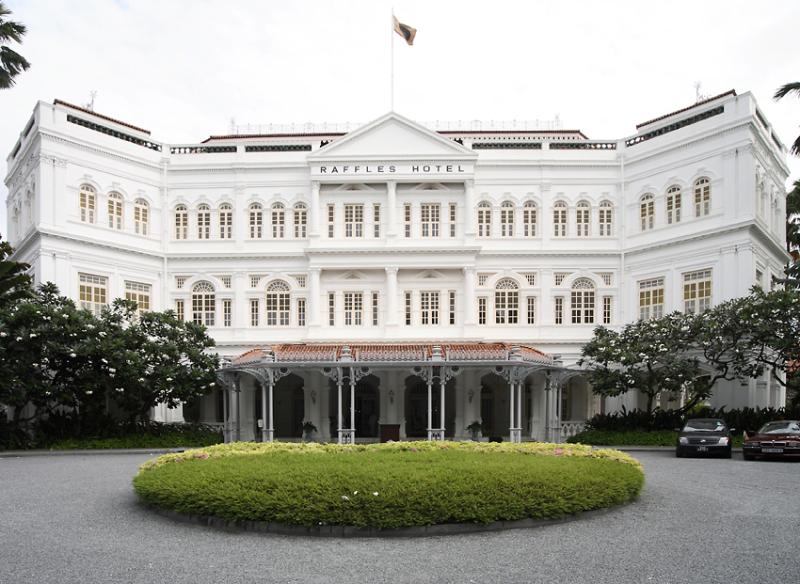
Meanwhile, back in the 1800s the British settled into the familiar colonial setup which they had perfected in India, though the iconic Raffles Hotel was actually built by two Armenian brothers who had lived in Persia (present-day Iran). The hotel opened in 1887, the same year the statue of Raffles was unveiled. The hotel was originally by the sea, but it's now 500 meters inland, thanks to an ongoing process of land reclamation carried out by the government. The expansion of the island, sometimes by linking it with small neighboring islands, has been so extensive that the area of Singapore has gone from 582 square kilometers in 1960 to 716 square kilometers in 2014, and it's expected that another 100 square kilometers of land will be added by 2030. |
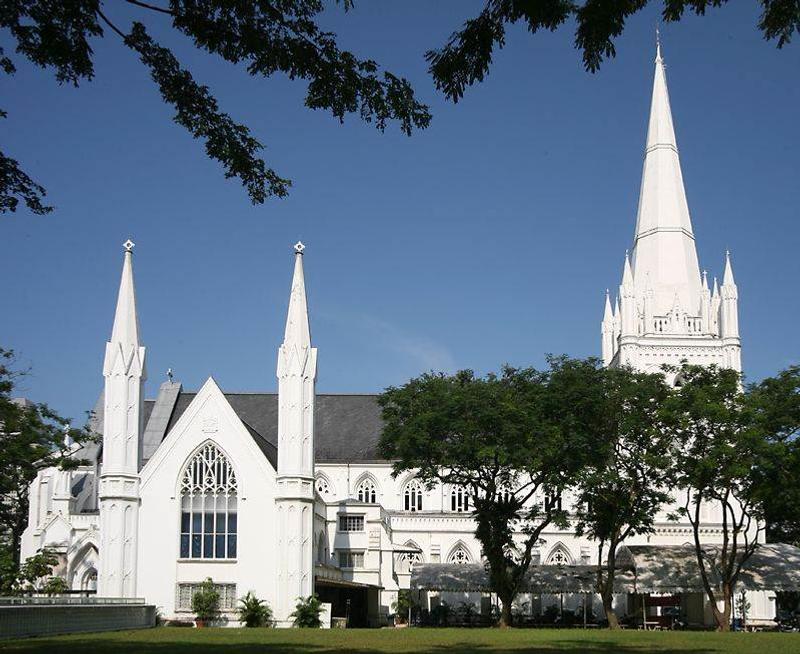
Trade flourished under the British, and Singapore also became a center for rubber cultivation. The growing Chinese and Malay population was mostly left to its own devices, though large numbers of laborers were brought in from India and still represent 9% of the population of about 5 million. The British themselves did their usual best to transplant a bit of chilly England into this hot and humid tropical outpost, one example being St Andrews Cathedral, which was consecrated in 1862. |
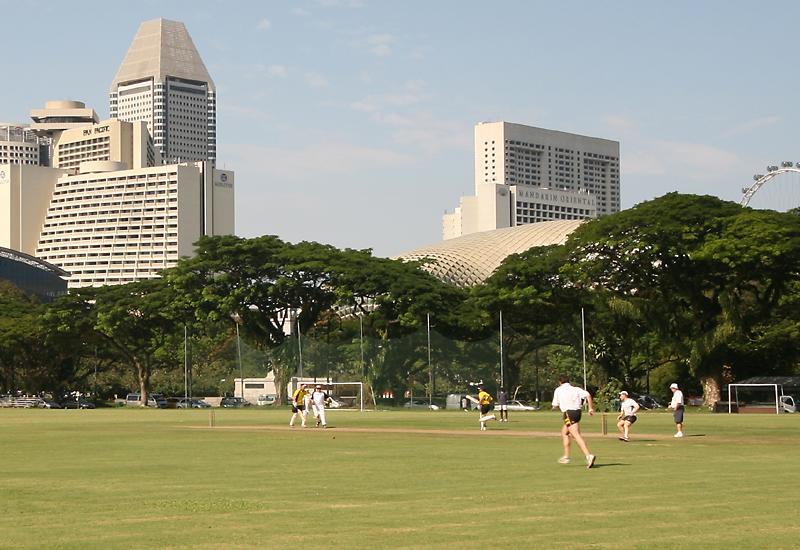
Like many of the English institutions transplanted to this part of the world, the cathedral is near the "Padang", a Malay word meaning "field". The Padang is an open space which Raffles himself set aside for public use almost as soon as British Singapore was established in 1819. The Padang is the stage for the real religion of the English, the game of cricket, whose rules are nearly inscrutable to foreigners, and whose five-day long games frequently end in a draw. |
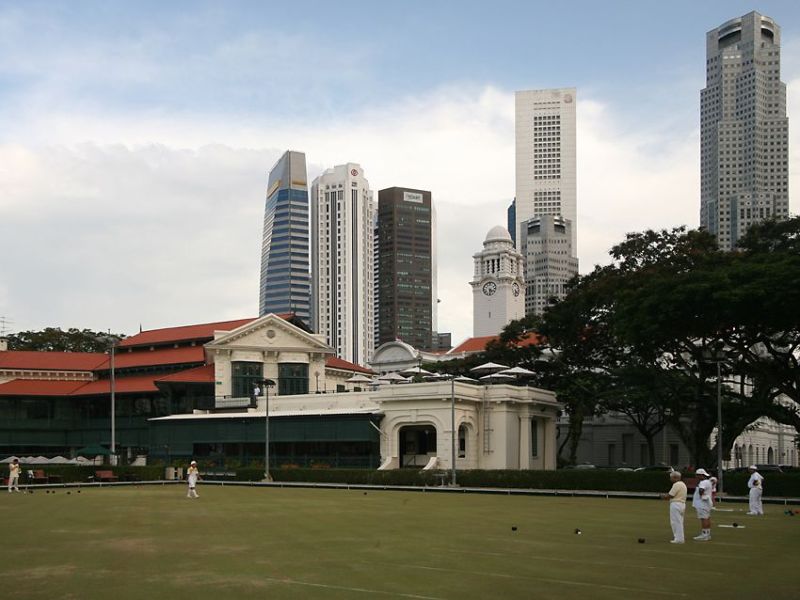
This building houses the Singapore Cricket Club, though the game being played in this photo is lawn bowls. It's best to keep a stiff upper lip, of course, and ignore all the changes going on, like those pesky buildings in the background along the banks of the Singapore River! Change has been a constant around here, not least being change of who was in charge. Singapore became the main British naval base in Asia, the "Gibraltor of the East", with large gun emplacements protecting it from naval attack. This all proved to be of little consequence when the Japanese turned up during the early weeks of the War in the Pacific, landing troops in northern Malaya and then using bicycles to make their way down the peninsula. The large guns protecting Singapore were pointing out to sea and were useless to prevent the Japanese from invading the island from the mainland. At this time it was Britain's worst-ever defeat in wartime, resulting in 80,000 military personnel becoming prisoners of war in addition to the 50,000 prisoners the Japanese captured in Malaya. After the surrender the Japanese carried out a premeditated massacre of up to 25,000 Chinese civilians, because of their perceived opposition to Japan. |
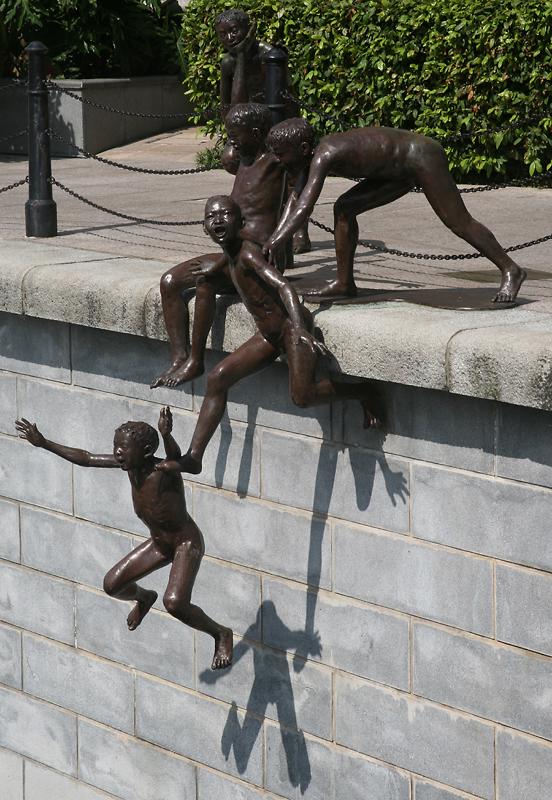
As I mentioned, Singapore declared independence from the UK in 1963, initially joining peninsular Malaya, Sarawak and British North Borneo to become the new nation of Malaysia. However racial and religious tensions between Chinese-majority Singapore and the Malay-majority states which comprised the remainder of Malaysia led to Singapore becoming an independent nation in 1965. This imaginative statue by local sculptor Chong Fah Cheong called "First Generation" is on the bank of the Singapore River near the Cavenagh Bridge. It's one of a number of statues along the river which portray the lives of local people in bygone days. |

The Merlion was originally created as a logo for the Singapore Tourism Board, but it's now one of the most well-known symbols of the entire country, with some locals loving it and some hating it. The flow of water from its mouth has led to the local slang of vomiting people being referred to as merlions. No doubt many were happy when it was hit by lightning in 2009 and part of its head was blown off. It's perhaps fitting that this mythical hybrid of a lion and a fish should be the national symbol, because Singapore itself is a rare creature, one called a "city-state", meaning a city which is also a sovereign country. The only two other city-states in the world are Monaco and Vatican City, and Singapore is definitely the giant among city-states, with a population of five million, compared to 36,000 people in Monaco, and only about 1,000 people in Vatican City. Singapore also differs in that it's an island, though it is only one kilometer off the southern coast of Malaysia and is connected to the mainland by a causeway. |

The British set up the trading post of Singapore only 135 kilometers north of the equator because of its ideal location for international trade, and as you can see from all the buildings it's succeeded brilliantly. Whenever you visit you're sure to see plenty of construction going on to support the country's commercial activities. In spite of its small size, the port of Singapore is one of the five busiest in the world. In this photo you can see the Esplanade Theatres On The Bay in the foreground, which because of their shape have been variously described either as a giant pair of fly eyes or as the infamous durian fruit, which smells so awful that it's banned from hotels and aircraft! On the left of the photo is the Singapore Cricket Club, the domed building is the old Supreme Court building with City Hall next to it and the new Supreme Court surmounted by a dish behind it. The City Hall building actually doesn't serve as a city hall because there's no mayor or city council! It's intended to soon convert the building to a National Art Gallery. |
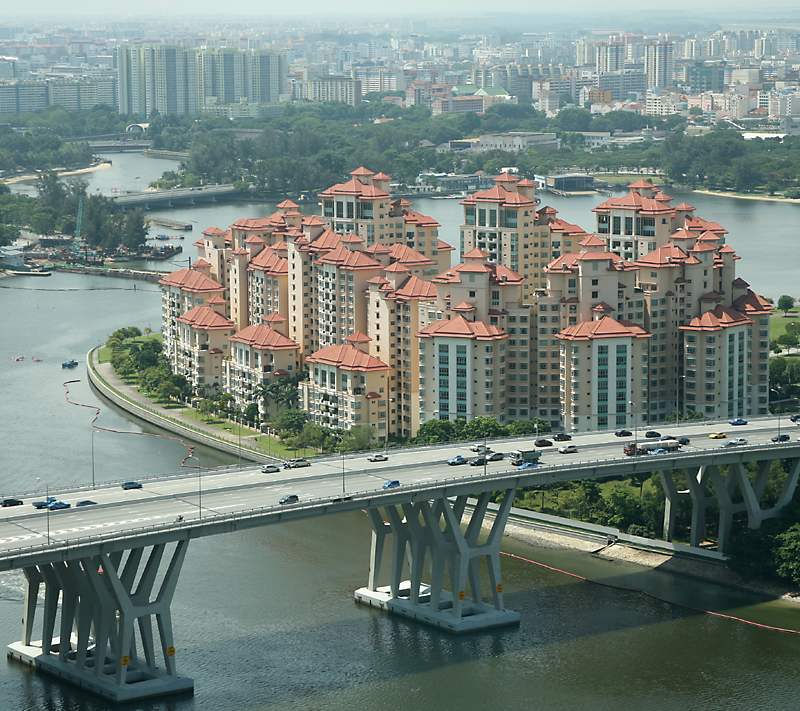
Singapore is the second most densely populated country in the world, behind its sister city-state Monaco. Singapore is also one of the few countries in the world where people actually want to buy the state-subsidised housing in which they live. Crime is low throughout the country and even the political leaders, who are very well remunerated, have a reputation as uncorrupt. The apartment blocks in the foreground of this photo, just behind the Benjamin Sheares bridge, look too upscale to be public housing, most of which is further out from the downtown area. |
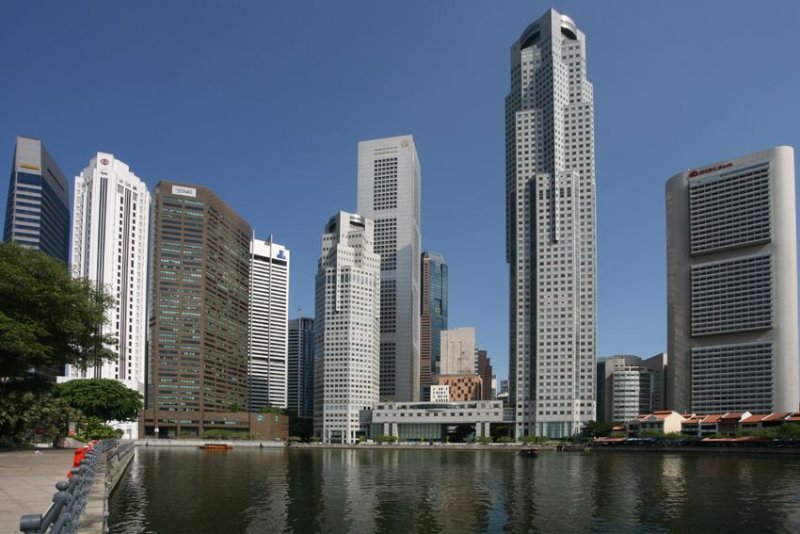
These are just a few of the central business district buildings along the Singapore River which house local and multinational businesses. A large degree of the country's social and economic success can be attributed to the efforts of the People's Action Party (PAP), which has ruled since 1959, a few years before complete independence. Lee Kuan Yew became the first Prime Minister and he dominated the PAP, relentlessly pursuing his economic development goals. He retired, at least nominally, in 1990 as the longest-serving prime minister in the world. However he stayed active in the cabinet as "Senior Minister" and in 2004 when his son Lee Hsien Loong became Singapore's third Prime Minister his father was appointed to the position of "Minister Mentor". |

Lee's autocratic style has been continued under his successors, who maintain strong control over the media and the judiciary. The party uses very restrictive libel laws and other measures to suppress political and other opposition, including defamation lawsuits and judgements restricting sales against foreign publications such as The Economist and the Far Eastern Economic Review. This very prescriptive approach to society and politics has lead to Singapore frequently being labeled as a "nanny state" which tries to control too many aspects of its citizens' lives. |
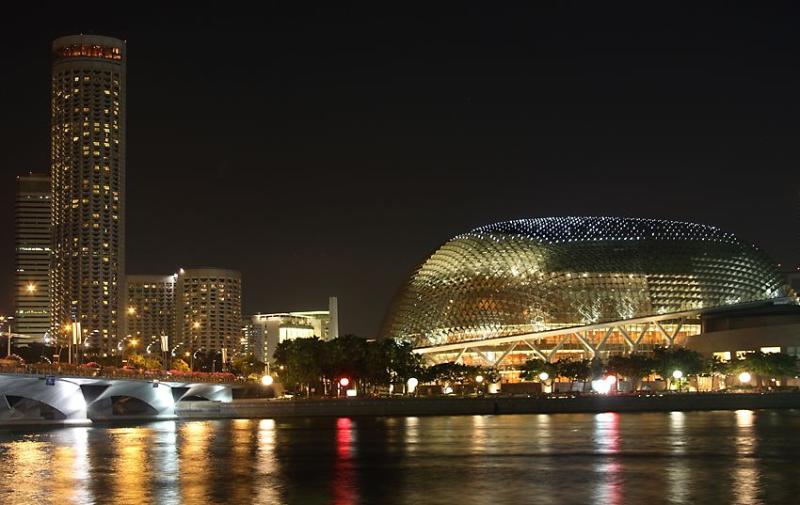
This much control isn't very conducive to spontaneous social and artistic activities, so the government did what comes naturally and organized these activities! Famously, in 1983 the government set up a dating agency because Lee Kuan Yew was worried that so many female university graduates were unmarried. However even with efforts like this, the country's population growth fell so low that the government introduced financial and other incentives for people to have more children. The arts also don't flourish in this sort of authoritarian environment, so the government made special efforts to encourage creative people, too. One initiative was the commissioning of various statues along the Singapore River, like "First Generation", above. An initiative aimed at the performing arts was the construction of the two "Theatres On The Bay", which have the rather clumsy official name of "Esplanade - Theatres On The Bay". |
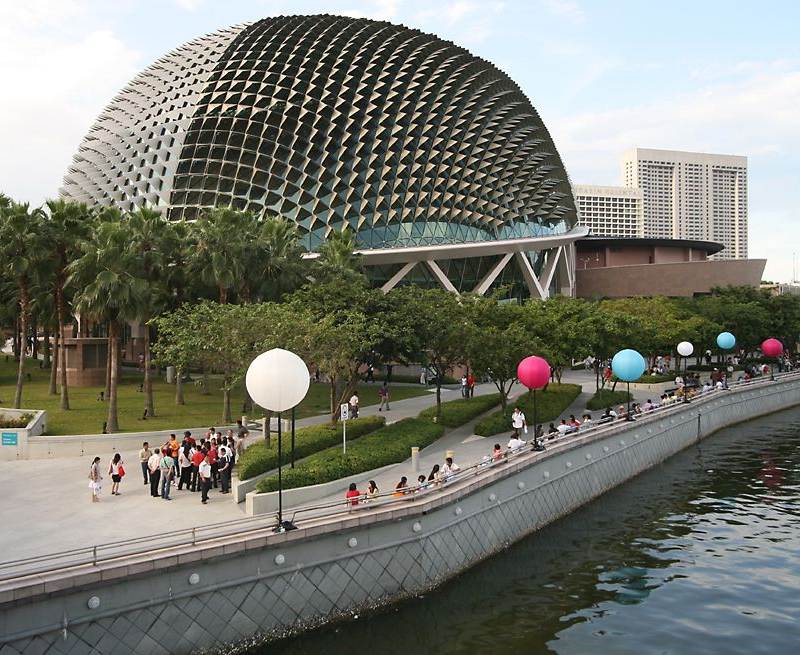
Here's one of them in the daytime, showing off its position near the mouth of the Singapore River. Of course, with all of the land reclamation which goes on, the river mouth keeps moving further and further out to sea! The Esplanade and the theaters themselves are both built on reclaimed land. |
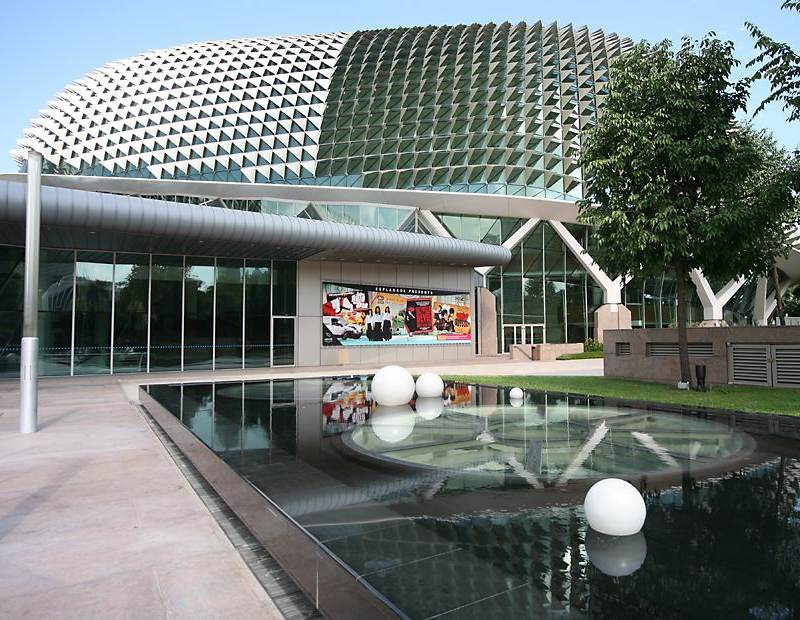
The theatres contain a concert hall seating 1,600 people, a theatre holding 2,000 people and smaller venues with capacities of 245 and 220 people. There's also an outdoor theatre and other outdoor performing spaces. The buildings opened in 2002 and boast an organ with 4,740 pipes. |
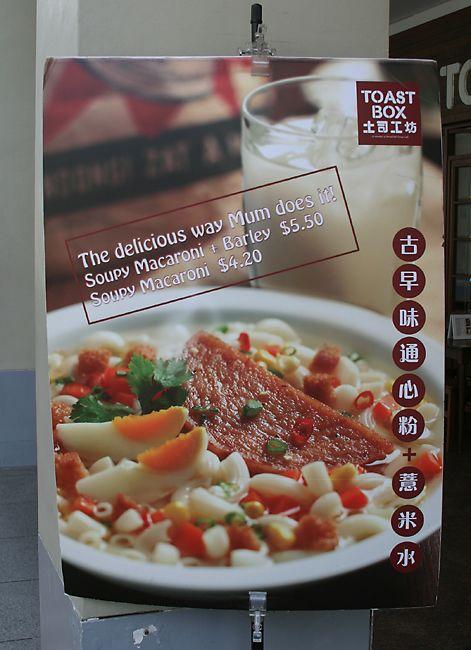
One area in which Singapore has long excelled, even without government direction, is food. Many foodies consider the local dining to be one of the best reasons to visit the country. The variety and style largely come courtesy of the ethnic diversity - Chinese, Malay, Indian and other influences all playing their part. As usual the government has stepped in, organizing the Singapore Food Festival each July. It's great to have local flavor, but the flavors might not always be exactly what you had in mind. Mum's delicious soupy macaroni and barley is one thing, but I'll never forget my first visit to Singapore in 1994, when I saw a food cart selling delectable items like pig's intestines "large and small", as well as pig's lungs and other tasty snacks!
|
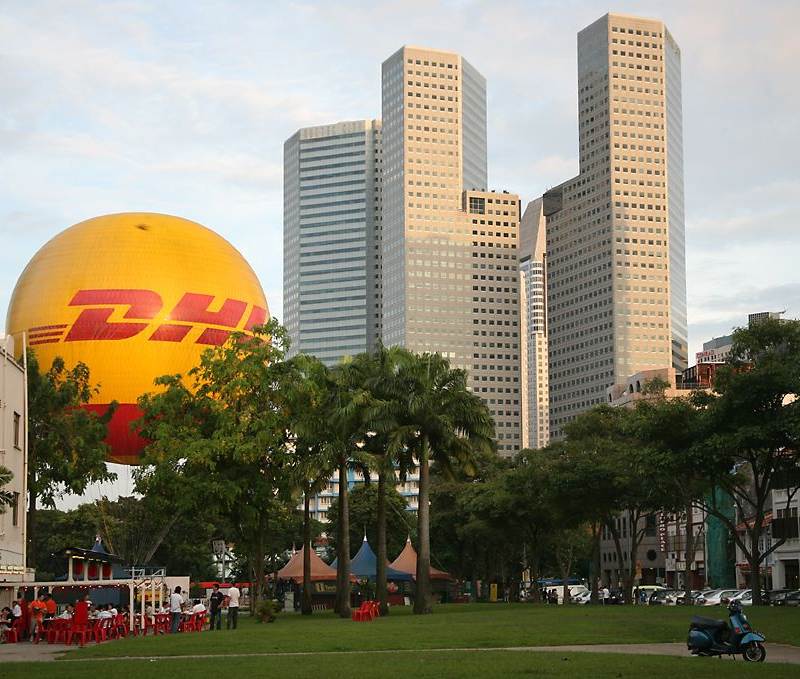
For a few years the DHL balloon was the best way to see Singapore from above. It was the second-largest tethered helium balloon in the world, able to take 29 passengers up to a maximum height of 180 meters (about 48 stories high). The global shipping company DHL was happy to provide sponsorship in return for its name and company colors appearing on the balloon, because up until this project the government had banned large advertisements in public places. After only two years the government got its revenge for this end-run around its authority. The lease on the property expired and wasn't renewed, and permission was denied for the company operating the balloon to relocate to any of three other sites it had identified. |
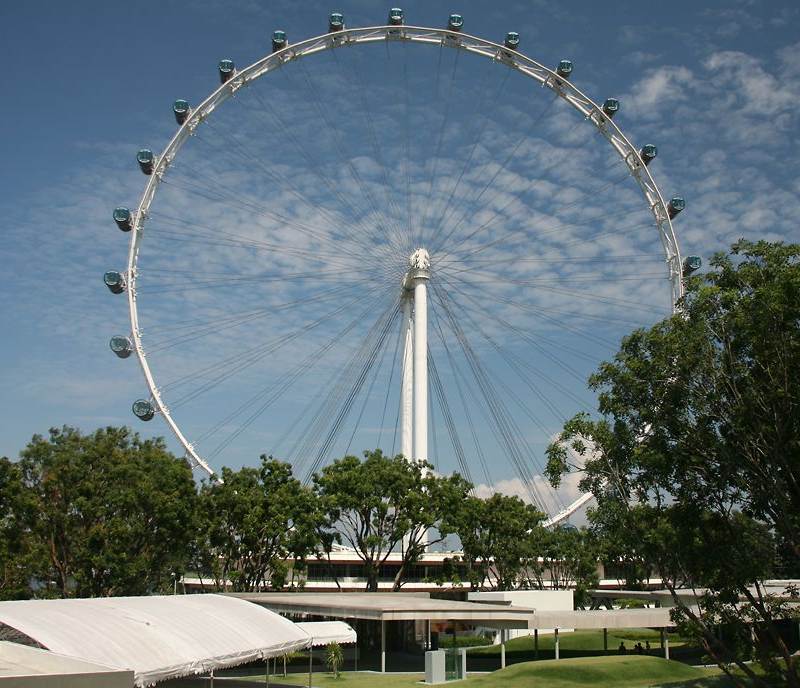
And here's the main reason the government decided to shut down the balloon operation, a superior alternative in the form of the Singapore Flyer ferris wheel (or, as builders of these now prefer to call them, an observation wheel). The Singapore Flyer opened in March of 2008, about six months before the DHL balloon was grounded for the last time. At the time it started operation it was the tallest observation wheel in the world at 165 meters (541 feet), but in 2014 it was overtaken by the High Roller in Las Vegas, Nevada, which is only 2.5 meters or 9 feet higher. |
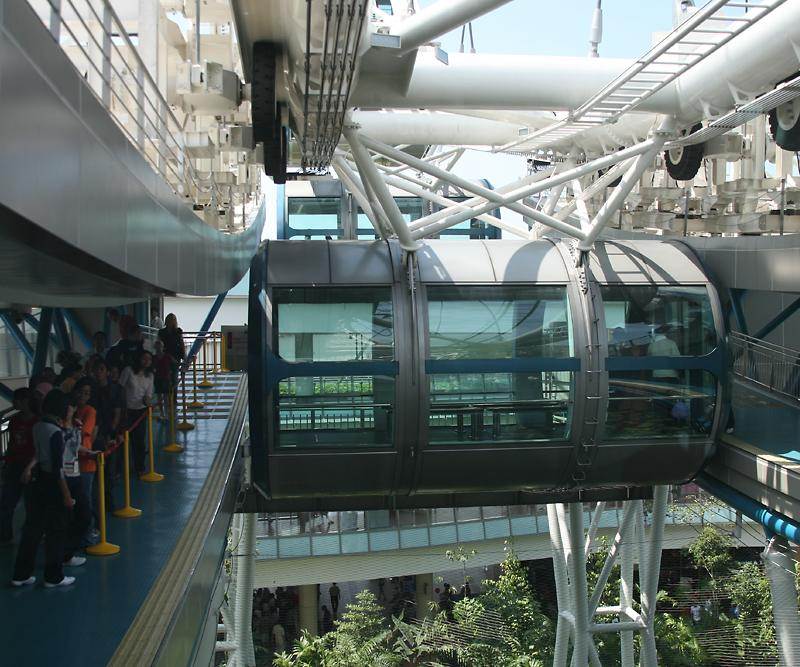
The Singapore Flyer carries up to 28 passengers in each of its 28 capsules, which thankfully are air-conditioned! Like other wheels such as the London Eye, it rotates continuously, but slowly enough so the passengers can easily embark and disembark as it moves. A complete circuit takes 32 minutes, allowing plenty of time to enjoy the view and the rest of the experience. Apparently the direction of rotation was changed from counter-clockwise to clockwise the August after it opened to the public, because feng shui masters announced that it would be more auspicious that way! Ironically, a few months after that change was made the wheel stopped turning because of bad weather and 70 people were stranded for five hours. Then, just a few weeks after that a fire caused the wheel to stop again, this time stranding 173 people for six hours, this time without air-conditioning. |
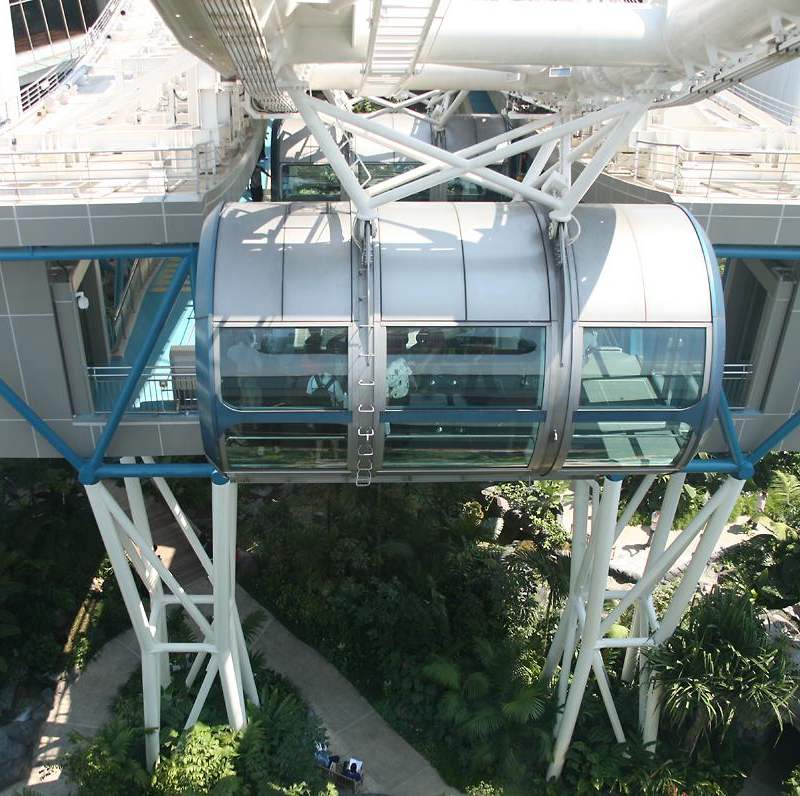
Below the wheel is what is billed as a "tropical rainforest garden" which according to the company website is "a nature lover's dream come true", all a rather sad commentary on people's notion of what a rainforest is like. Perhaps it is all just a matter of feng shui, but in 2013 the company operating the Singapore Flyer went bankrupt; however, it's expected that the wheel will continue to operate even while new financing to continue its operation is being sought. |
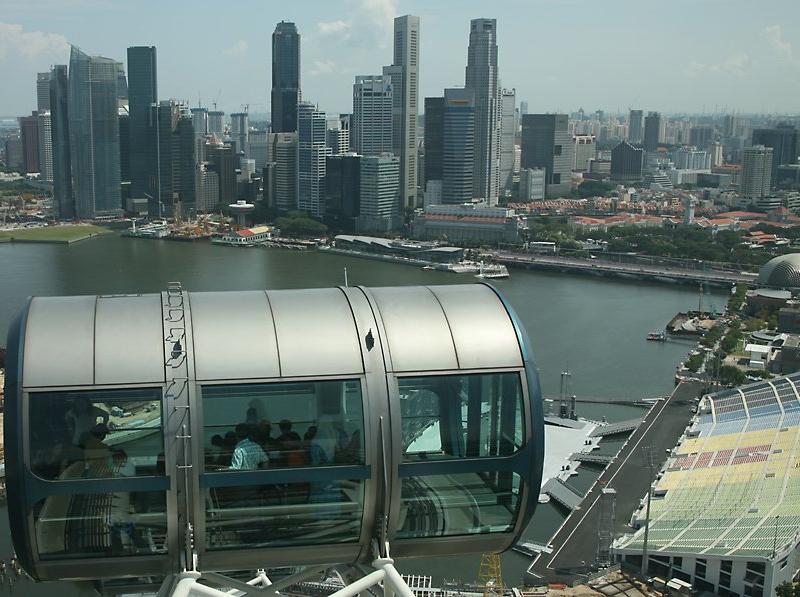
Well, in case the Flyer gets shut down, at least you've now seen the view from the top! Just don't expect the view to stay the same. The cranes in the background of this photo will doubtless continue to change the skyline, and the relentless reclamation of land will change the very shape of this unusual little island. |